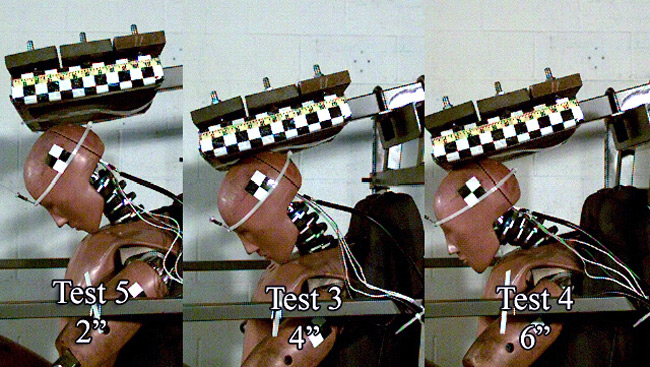Dummy Development | Publications
Are dummies biofidelic? Do they behave like humans in crash tests? Pendulum tests were conducted to determine neck injury potential. We know, from various cadaver test studies, the amount and direction of forces that, when applied to the head, injure the human neck. The pendulum test device subjects the dummy to comparable test conditions. Dummy neck measurements were recorded and compared to tolerance criteria for the human neck. The pendulum tests allow us to calibrate the dummy neck to a human neck.


Development of a New Dummy Neck that is Biofidelic in Rollover Crashes: Catastrophic spinal injuries with quadriplegia in rollover crashes are a direct result of head interaction with the vehicle structure. The rapid intruding weak roofs push the head of the occupant down causing the neck to bend and compress beyond physiological limits, which results in tearing of ligaments and disruption of the vertebral bodies. To date, there are U.S. regulatory occupant protection requirements for frontal and side impact crashes, but not for rollovers. Rollover crashworthiness is assessed by a quasi-static test, FMVSS 216 of an unoccupied vehicle.
The anthropomorphic test dummy that we primarily use is a 50th percentile adult male Hybrid III dummy. It is the size of an average adult male (5'10" and 171lbs). The Hybrid III dummy is equipped with upper and lower neck that record the amount of force that impacts the dummy's head, how long the force is applied to the head, as well as how far the neck bends as a result of that force. Occupant motion was recorded by high-speed video.

